Ukraine war timeline: key events in conflict 100 days on from Russia’s invasion - how long could it last?
and live on Freeview channel 276
On 24 February 2022, Vladimir Putin ordered a full-scale Russian invasion of Ukraine, with air strikes hitting the country.
It came almost eight years to the day after Russia previously annexed Crimea in February 2014, which had led to fighting in the Donbas region, with Ukrainian forces and Russian-backed separatists frequently facing off.
Advertisement
Hide AdAdvertisement
Hide AdPutin’s new act of aggression in 2022 had been predicted for several months after diplomacy had failed at every stage, but the Russian president’s determination to overthrow a sovereign state still took the western world by surprise.
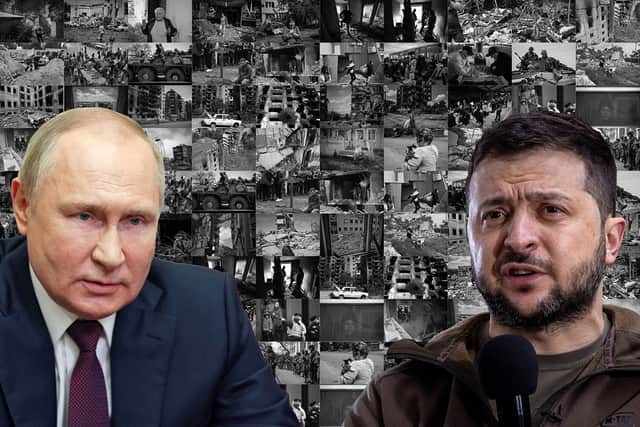

However, the Kremlin hadn’t counted on two crucial factors: the strength and organisation of the Ukrainian resistance, led by their talismanic President Volodymyr Zelensky, and a largely united Nato ready to arm Ukrainian forces to the teeth.
While the war in Ukraine has begun to slip down the news agenda here in the UK, it continues to rage in the east of the nation, where Russian forces have concentrated their efforts after abandoning their earlier attempt to seize Kyiv.
Here is a timeline of the key events in the protracted conflict so far - and a look at how long it could last.
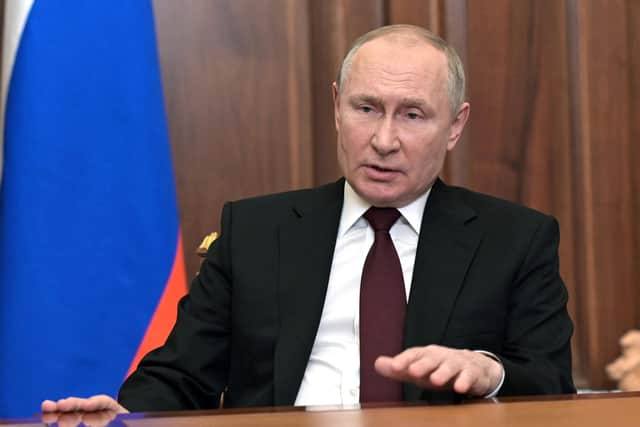

Advertisement
Hide AdAdvertisement
Hide Ad24 February: In a pre-dawn TV statement, Vladimir Putin announces an invasion of Ukraine and demands that its military lay down their arms. Moments after the televised speech, attacks are reported on Ukrainian military targets with explosions heard in the capital Kyiv.
Putin calls it “a special military operation” and, in a warning to the West, says that anyone who tried to repel the invasion would face “such consequences that you have never faced in your history”.
25 February: In a message of defiance, Ukraine’s President Volodymyr Zelensky gives a video address confirming that he intends to remain in the capital: “I stay in the capital, I stay with my people. During the day, I held dozens of international talks, directly managed our country. And I will stay in the capital. My family is also in Ukraine. My children are also in Ukraine. My family is not traitors. They are the citizens of Ukraine. But I have no right to say where they are now.”
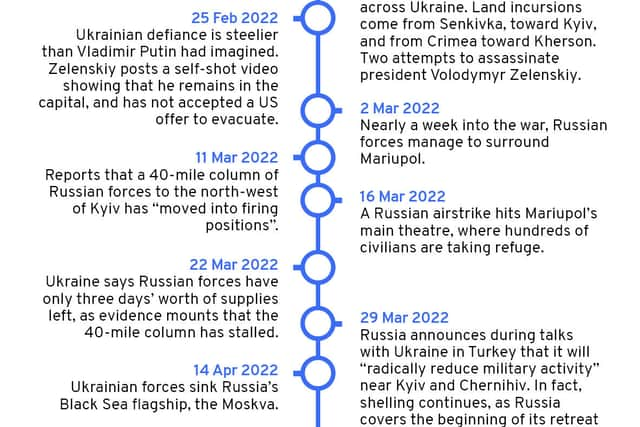

26 February: Vitali Klitschko, mayor of Kyiv and former heavyweight boxing champion, says he will take up arms to fight in a “bloody war” against Russia. His brother Wladimir – another former heavyweight boxing champion – has already enlisted in Ukraine’s reserve army.
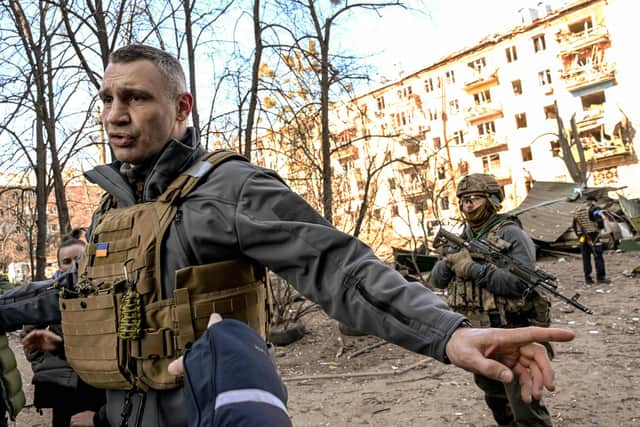

Advertisement
Hide AdAdvertisement
Hide Ad28 February: Russia and Ukraine hold their first ceasefire talk at the Belarusian border. This ended without an agreement after five hours.
1 March: There are reports of a 40-mile convoy of Russian army on the outskirts of Kyiv, prompting fears of a large-scale bombardment. Attacks continue on cities of Kharkiv and Mariupol, with Russia accused of using devastating vaccum bombs.
2 March: Nearly a week into the war, Russian forces manage to surround the city of Mariupol in the south. Russian troops also entered Kharkiv following days of intensive bombardment.
7 March: Attempts to set up humanitarian corridors to evacuate civilians fail as a temporary ceasefire ends.
Advertisement
Hide AdAdvertisement
Hide Ad9 March: A children’s hospital and maternity ward is hit by a Russian air strike. At least three people were killed - including a child - in the attack, Ukrainian officials said.
14 March: Russian journalist Marina Ovsyannikova protests the war in Ukraine on live Russian state TV. She is later fined and released.
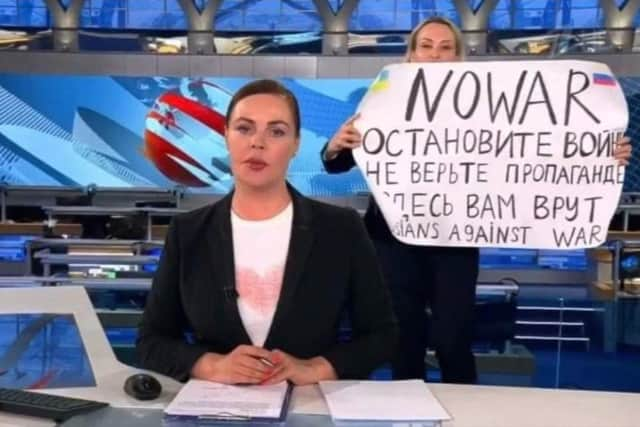

15 March: Unicef announces that refugee numbers are over three million due to the war, with many others being displaced internally.
16 March: A Russian airstrike hits Mariupol’s main theatre, where hundreds of civilians were taking refuge.
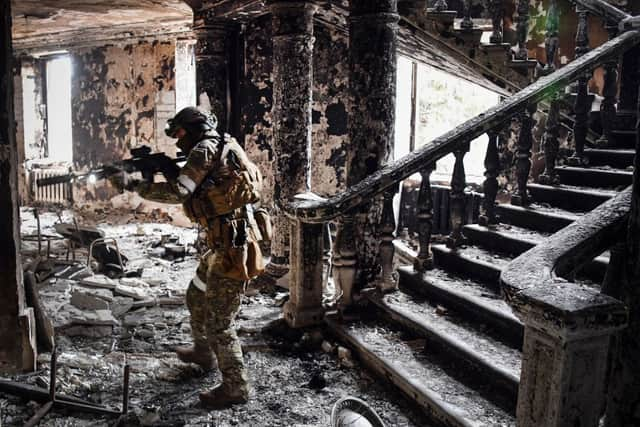

Advertisement
Hide AdAdvertisement
Hide Ad18 March: The UK’s Homes for Ukraine refugee scheme officially opens. More than 120,000 Brits have already registered their interest to house refugees fleeing Ukraine as Russia continues its invasion.
19 March: Putin holds a carefully stage-managed rally at Moscow’s Luzhniki stadium. He claims he is trying to “save people from suffering and genocide”.
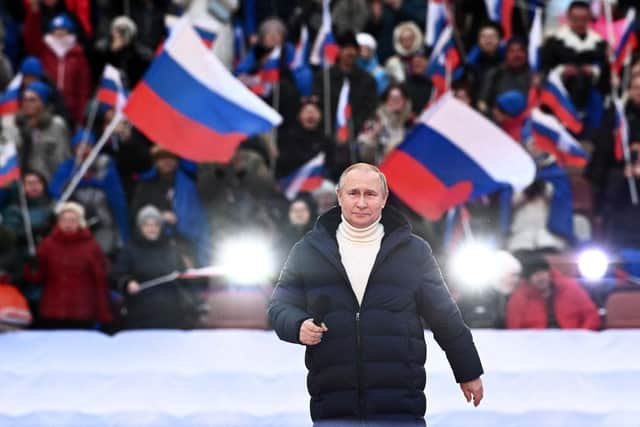

24 March: The UK Government announces that the Wagner Group has been added to its Russia sanctions scheme, following reports that they were targeting Ukraine’s president. At the start of the invasion hundreds of mercenaries belonging to the secretive organisation, which is seen as Vladimir Putin’s private army, were reportedly in Kyiv, with orders to track down and assassinate Ukraine’s President Volodymyr Zelensky and prepare the ground for Russia to take control.
22 March: Signs that the Russian invasion is stalling, as Ukraine reports that Russian forces have only three days’ worth of supplies left, and evidence shows that the 40-mile column has ground to a halt.
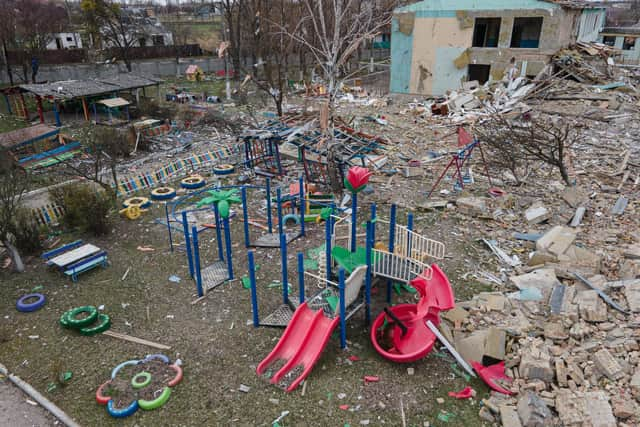

Advertisement
Hide AdAdvertisement
Hide Ad29 March: Russia announces that it will “radically reduce military activity” near Kyiv and Chernihiv, as it begins its retreat from the north of Ukraine.
1 April: After Russian troops begin withdrawing from Bucha, near Kyiv, images emerge of a bloody civilian massacre left behind, with bodies lying in the streets. In the days that follow, President Zelensky sees the devastation for himself, and accuses Russia of ‘genocide’ and ‘war crimes’.
9 April: UK Prime Minister Boris Johnson makes a surprise visit to Ukraine to meet with President Zelensky. Following the meeting Downing Street announces that Britain is to send 120 armoured vehicles and new anti-ship missile systems to support Ukraine.
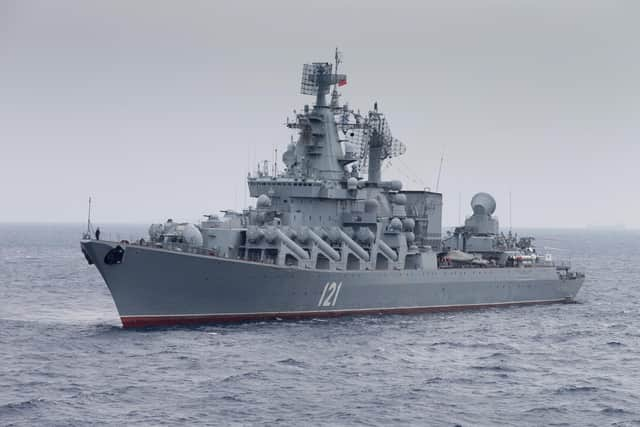

14 April: Ukrainian forces sink the Moskva, Russia’s flagship warship in the Black Sea. Fighting intensifies in Mariupol.
Advertisement
Hide AdAdvertisement
Hide Ad20 April: Russia announces the first test launch of its new nuclear-capable ‘Satan II’ Sarmat intercontinental ballistic missile system, with Putin claiming it is impossible to defend against.
21 April: After an extended siege, Putin says that the Mariupol steel plant should be sealed off, so that “even a fly cannot get out”.
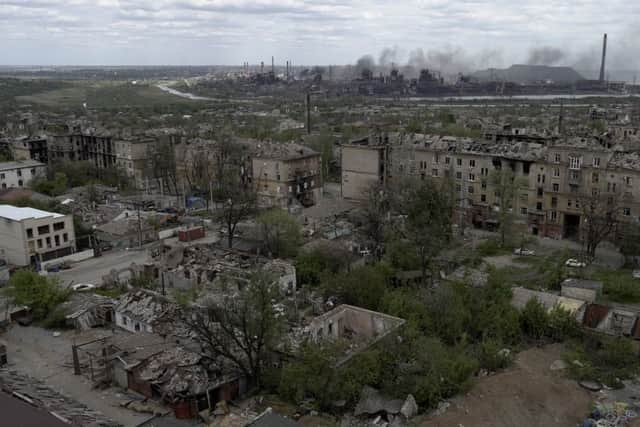

27 April: Russia would launch a nuclear war on the West rather than accept defeat in Ukraine, some of the nation’s most prominent propagandists say on state TV. One of the panel even suggests it would not be so bad, because “we will go to heaven, and they will simply croak”.
9 May: On Russia’s traditional Victory Day, Putin lets the occasion pass without any announcement of an escalation, or a declaration of all-out war against Ukraine, despite widespread rumours.
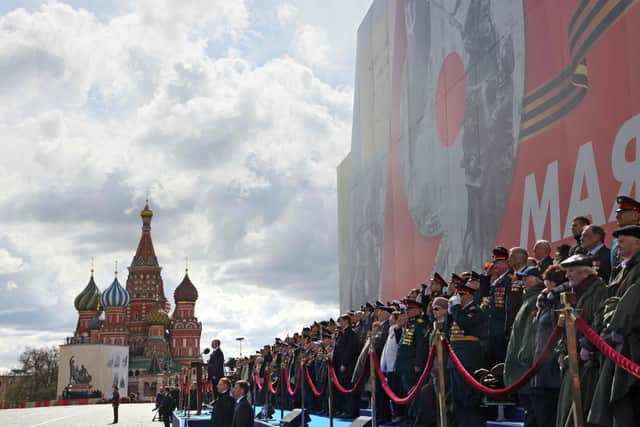

Advertisement
Hide AdAdvertisement
Hide Ad13 May: There are reports that Russian forces have been forced back from Kharkiv, and signs that Putin’s Donbas offensive is weakening.
14 May: Ukraine’s Kalush Orchestra win the Eurovision Song Contest, with their entry song Stefania. President Zelensky has vowed they will host the 2023 contest.


16 May: Sweden confirms its plans to join Nato, following in the footsteps of neighbouring Finland. However, the move draws strong objections from Turkey, a key NATO member, who declare the two nations should not be allowed to join because they have been too lax in taking action against Kurdish militants, and countries can only join if all current members agree.
17 May: The last remaining Ukrainian defenders of the Azovstal steelworks in Mariupol finally surrender.
Advertisement
Hide AdAdvertisement
Hide Ad21 May: Independent Russian media outlet Proekt makes fresh claims about Putin’s health, scrutinising the Russian President’s absences as well as visits by medical specialists. There has been long-held speculation that he may be suffering from cancer.
1 June: Ukrainian forces are under pressure in the east, and Russia identifies the city of Sievierodonetsk as its next target. Taking the city would mean Russia controls almost all of Luhansk, part of Moscow’s bid to capture the wider Donbas.
2 June: President Zelensky says Russian forces are now in control of 20% of Ukrainian territory.
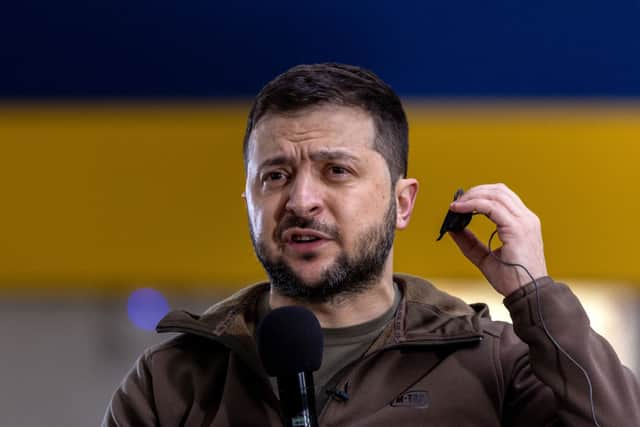

How long could the war in Ukraine last?
It is impossible to predict how long the conflict could last, with no sign of compromise on either side.
Advertisement
Hide AdAdvertisement
Hide AdEven if a ceasefire or agreement is reached between Russia and Ukraine in the not too distant future, there is also a warning that this may not quell Russian aggression years down the line, according to James Rogers, co-founder and director of strategy at the Council on Geostrategy.
“There’s nothing to say that in another one or two years from now, assuming that ceasefire or settlement is reached this year, that the Russians won’t start pushing again and we’ll see another round of invasion and occupation and war again on European soil.”
Near the start of the conflict, US lawmakers were briefed that the war in Ukraine could last another 10 to 20 years. This was backed up by UK Foreign Secretary Liz Truss, who stated the same timeline.
Comment Guidelines
National World encourages reader discussion on our stories. User feedback, insights and back-and-forth exchanges add a rich layer of context to reporting. Please review our Community Guidelines before commenting.
